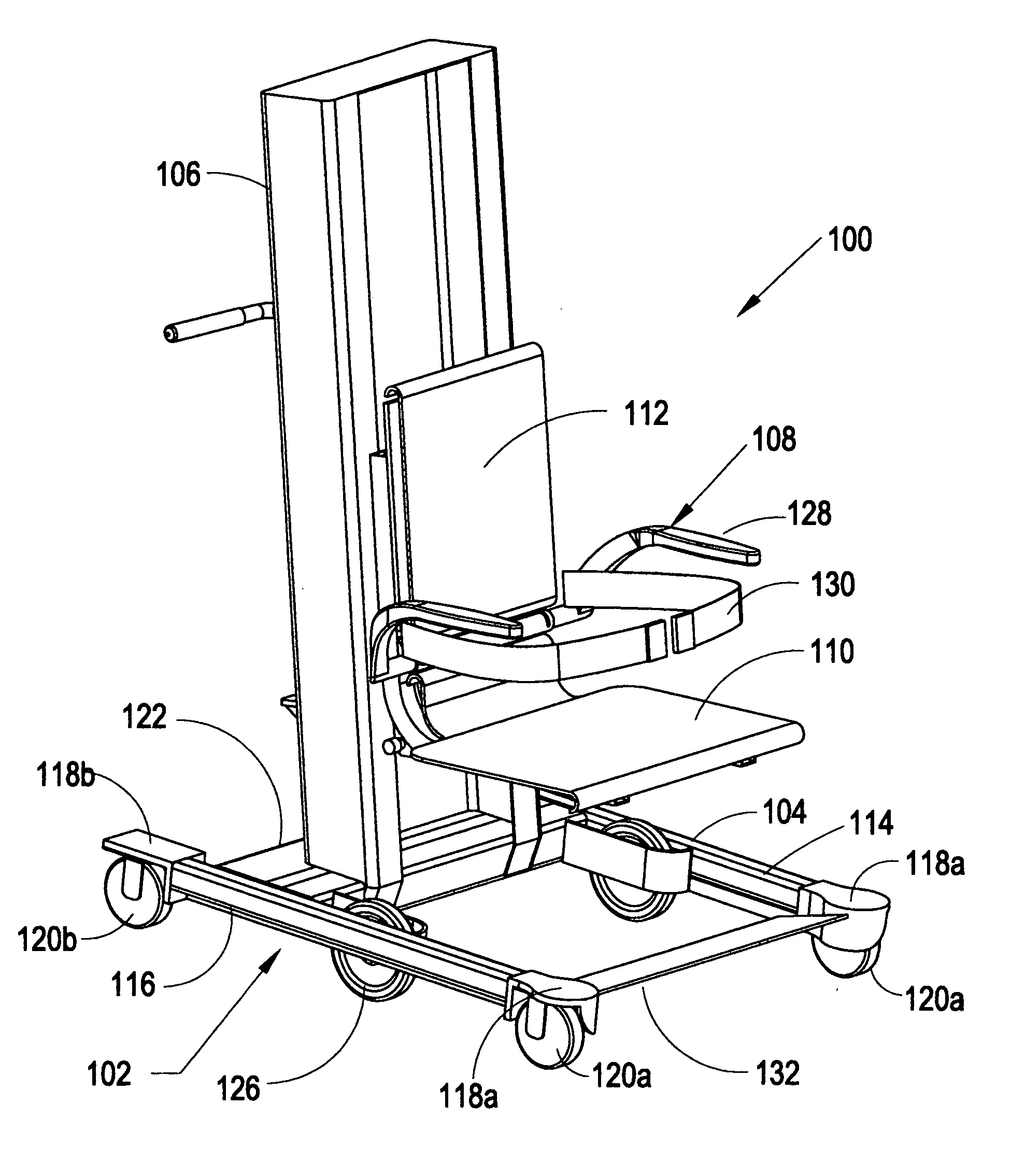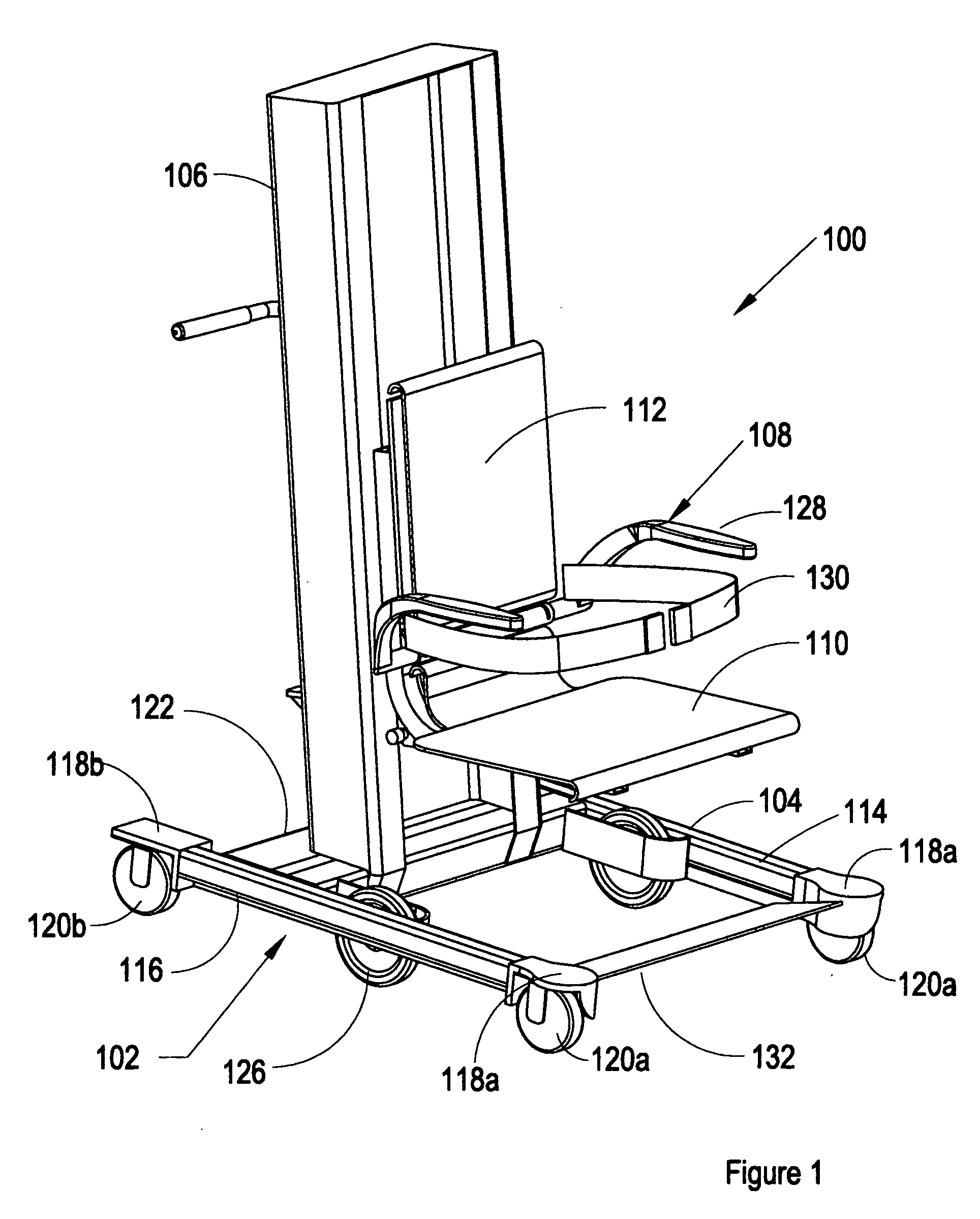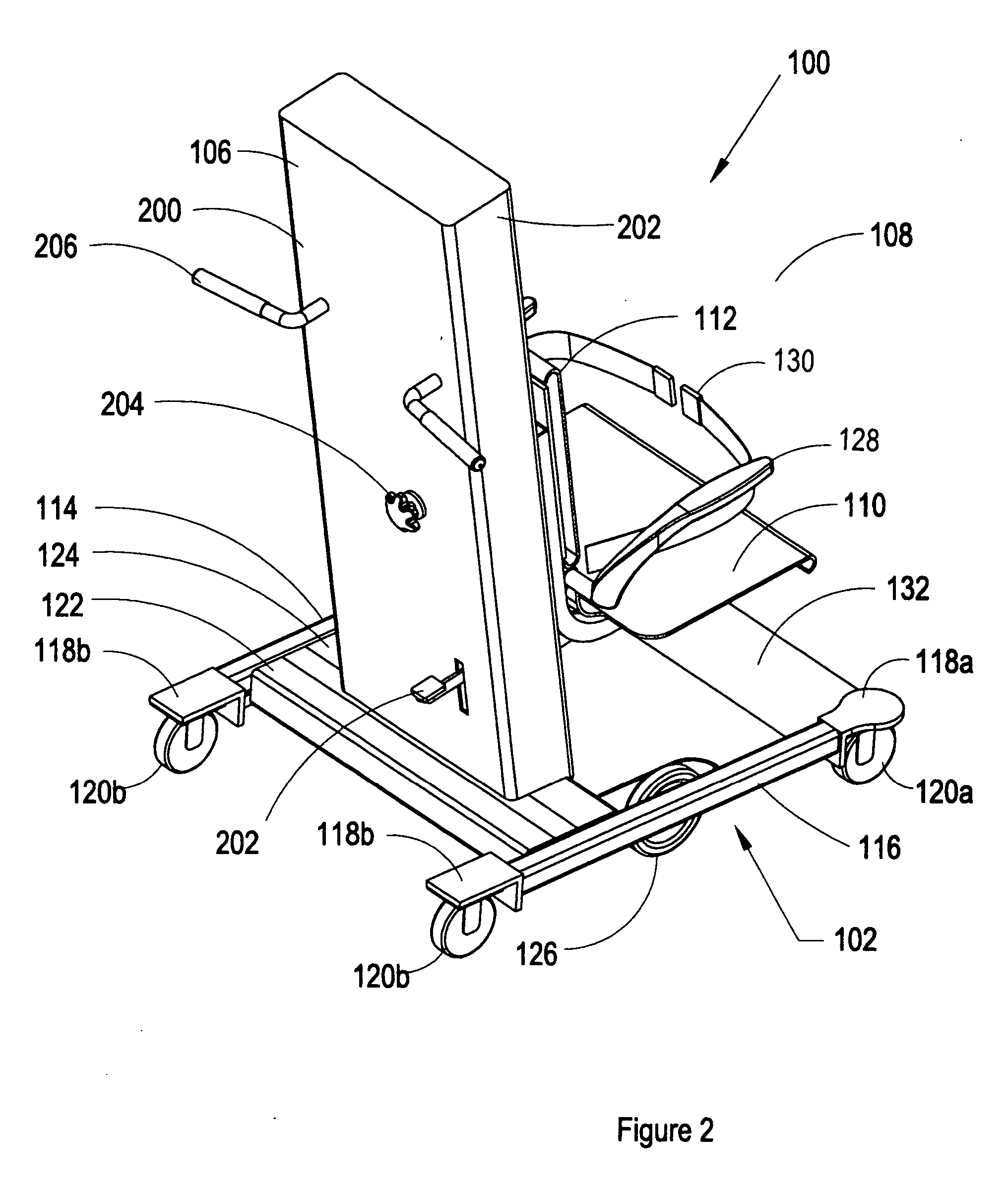Patient transport apparatus
a technology for transporting equipment and patients, applied in the directions of wheelchair/patient conveyancing, transportation and packaging, nursing beds, etc., can solve the problems of staff members being off the schedule for weeks and even months, unable to simply convey patients, and currently available solutions that are insufficient, so as to facilitate linear travel, facilitate the extraction of patients, and facilitate the recovery of fallen patients
- Summary
- Abstract
- Description
- Claims
- Application Information
AI Technical Summary
Benefits of technology
Problems solved by technology
Method used
Image
Examples
Embodiment Construction
[0032] A patient transport apparatus is described and shown at 100 in the figures. The patient transport apparatus 100 of the present invention is articulated and sized to fit between the body and the open door of virtually all vehicles. Further, the patient transport apparatus 100 uses a height-adjustable seat that is aligned with the vehicle seat to allow for simplified extraction of the patient from the vehicle. The height-adjustable seat lowers to just above ground height making the recovery of a fallen patient easier. A set of casters allows omni-directional travel of the patient transport apparatus 100 for precise placement and a pair of primary motion wheels makes linear travel easier while providing a minimal turning radius.
[0033]FIG. 1 is a front perspective view of the patient transport apparatus 100. The major components of the patient transport apparatus 100 include a frame 102 having a base 104 and a chair support 106, and a chair 108 having a seat 110 and a back 112. ...
PUM
 Login to View More
Login to View More Abstract
Description
Claims
Application Information
 Login to View More
Login to View More - R&D
- Intellectual Property
- Life Sciences
- Materials
- Tech Scout
- Unparalleled Data Quality
- Higher Quality Content
- 60% Fewer Hallucinations
Browse by: Latest US Patents, China's latest patents, Technical Efficacy Thesaurus, Application Domain, Technology Topic, Popular Technical Reports.
© 2025 PatSnap. All rights reserved.Legal|Privacy policy|Modern Slavery Act Transparency Statement|Sitemap|About US| Contact US: help@patsnap.com



